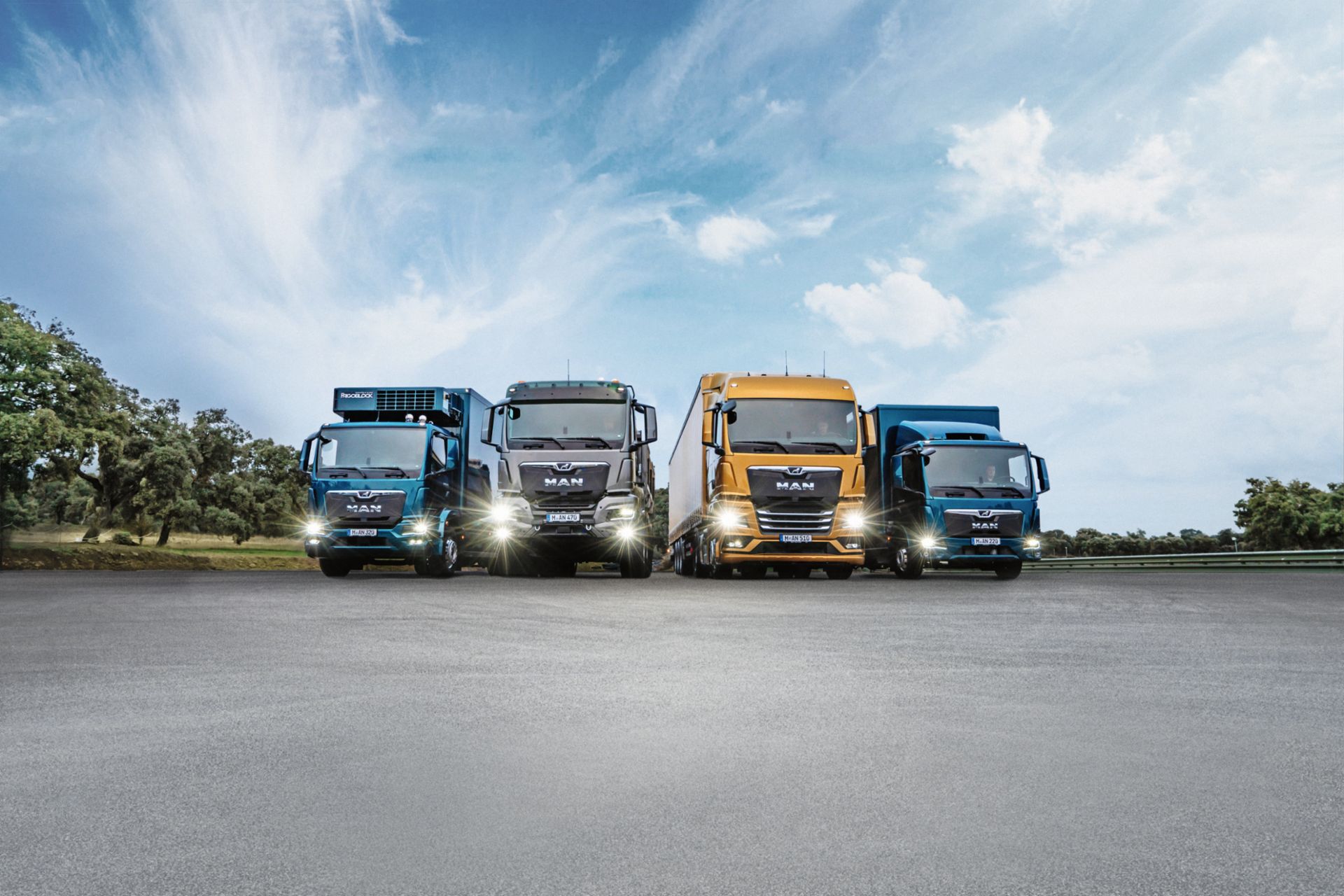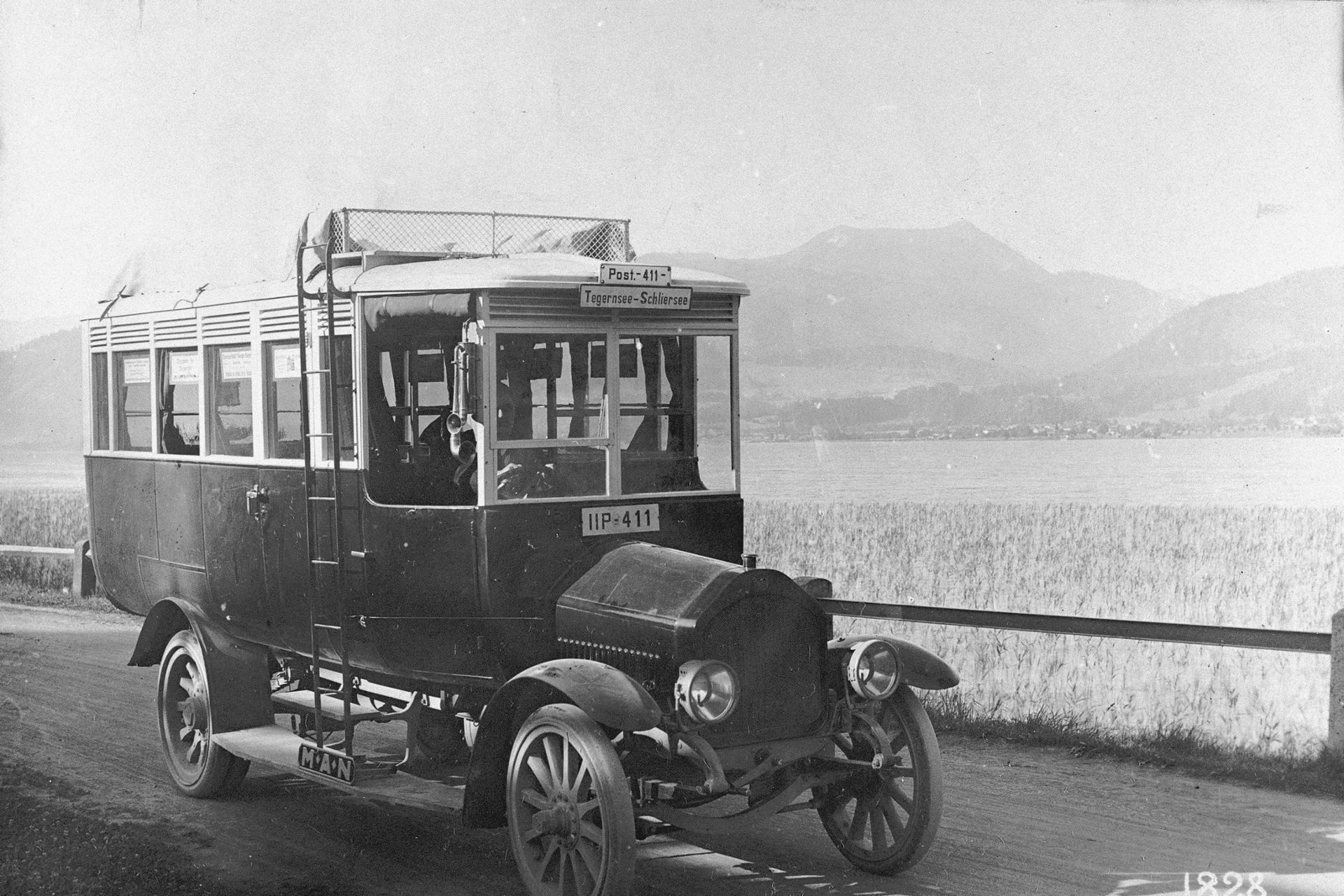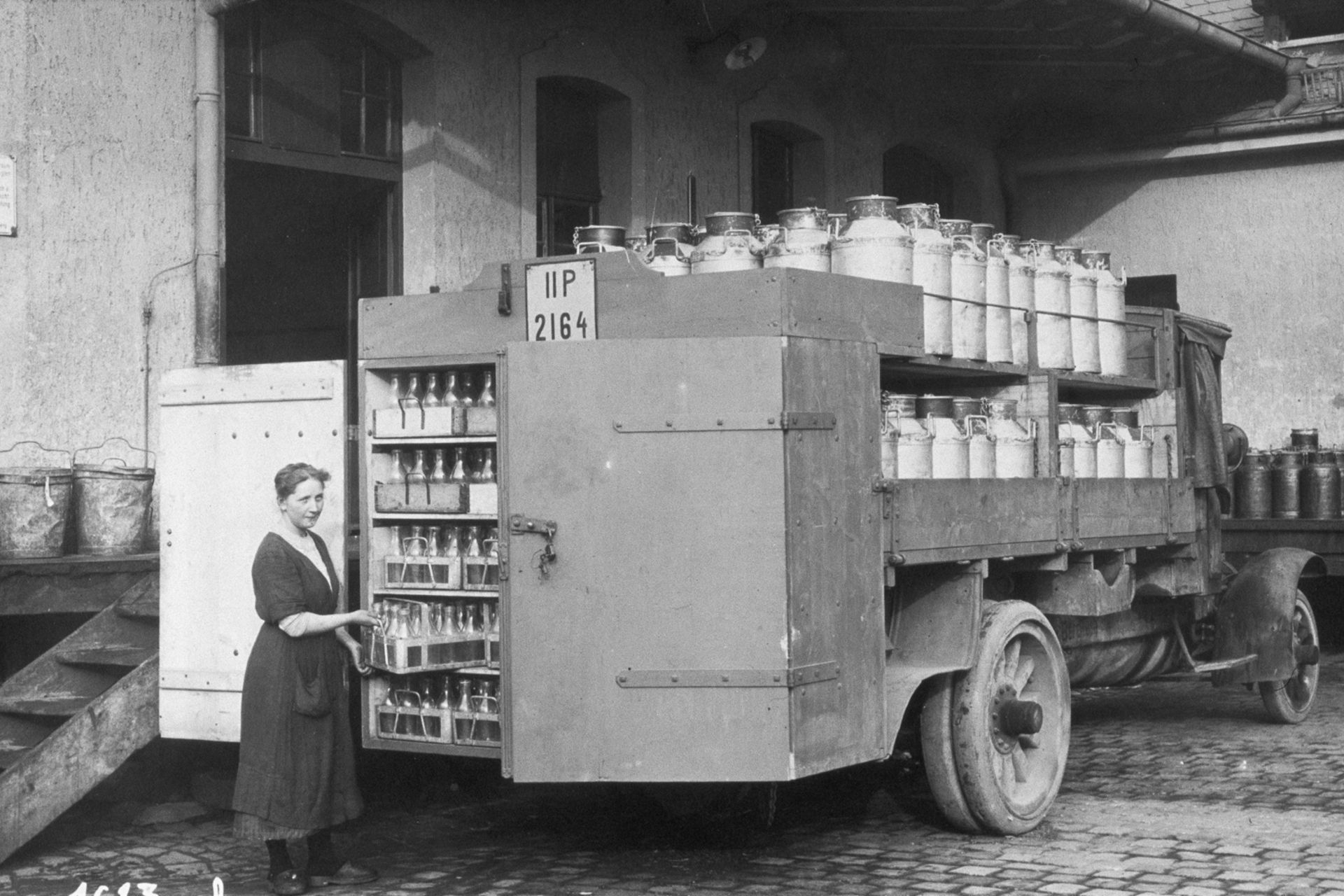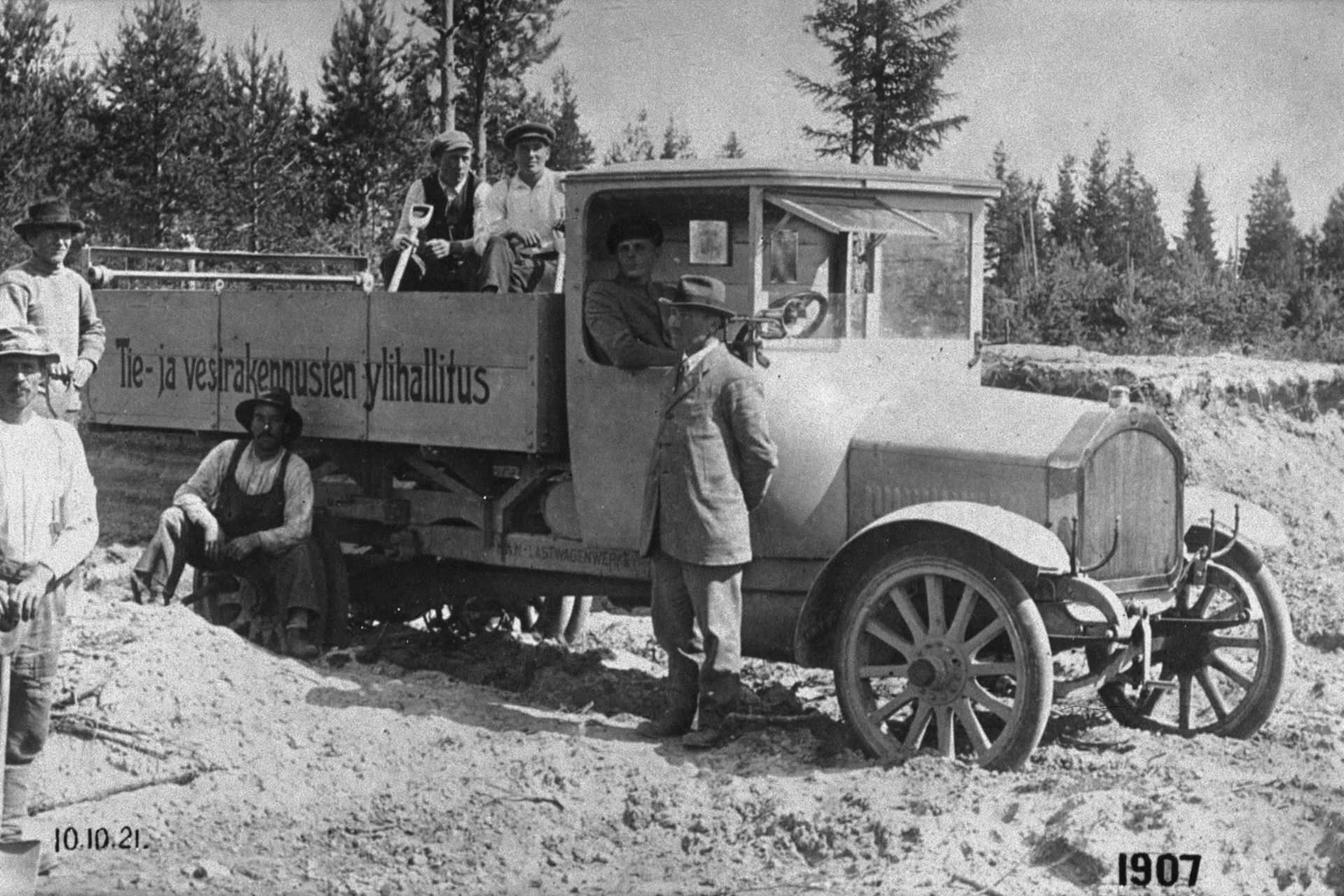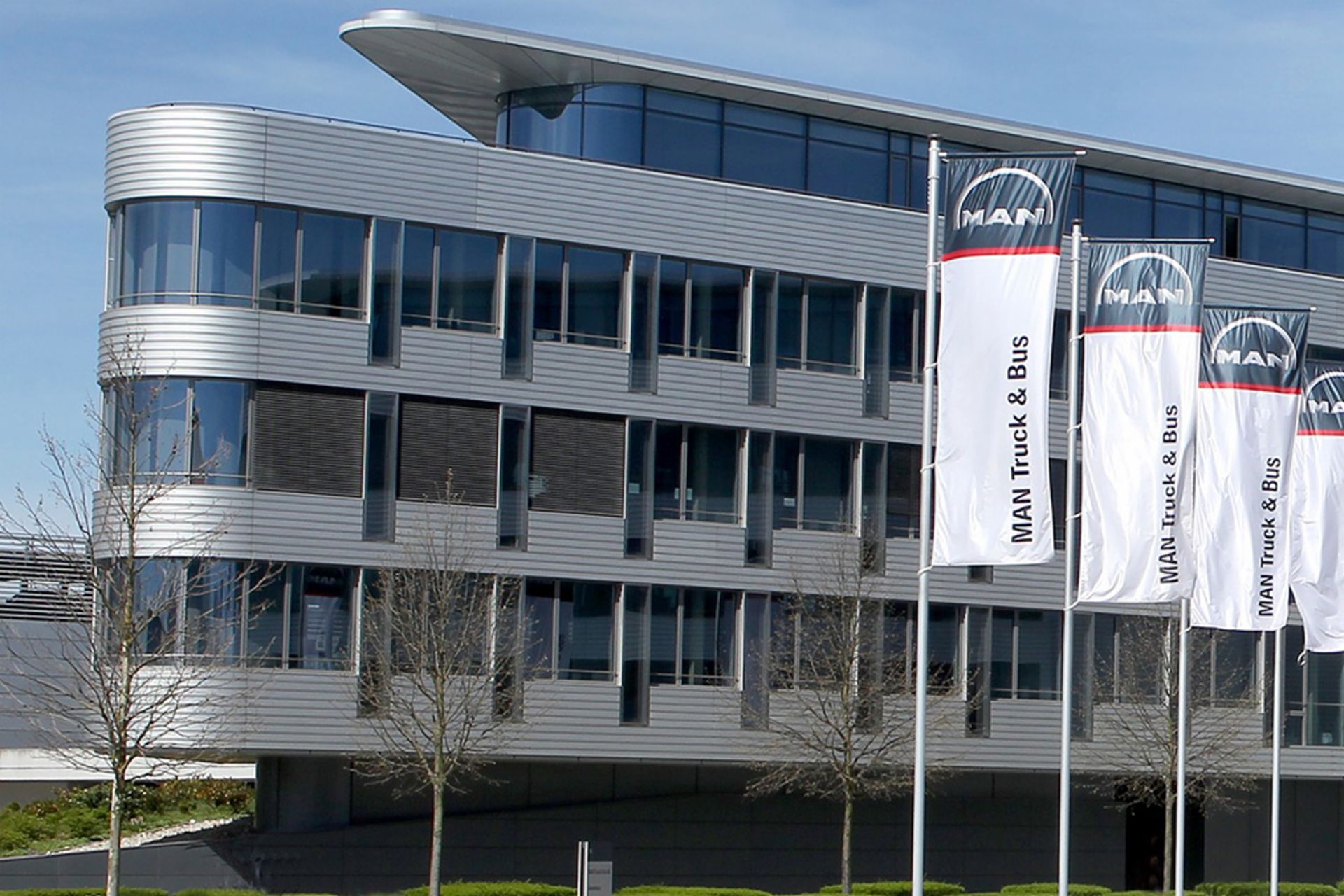It’s like the photos are talking to you. If you listen carefully, you can hear voices and sounds coming from the old black-and-white pictures. The rattling wheels of a box-shaped intercity bus that carried passengers and post along the sandy roads around the Tegernsee lake in Bavaria from 1916. The clinking of milk bottles as a milkmaid loads them up on to the back of a milk truck in 1920. Finnish construction workers laughing in 1921, in the far north of Europe, as they pose in front of a flatbed truck with Tie-ja vesirakennusten ylihallitus (“road construction and hydraulic engineering authority”) written on the side.
In all of these photos, which were taken in the early 20th century, your eye is immediately drawn to the vehicles. Road construction works, daily transport of milk or post, lending a helping hand to fire brigades, state building authorities, or large breweries — trucks and buses from M.A.N. have been transporting people and goods since the dawn of motorized mobility. In 2015, MAN — who has since chosen to omit the once typical periods from its abbreviation — celebrated 100 years of building commercial vehicles. 100 years is a respectable chunk of time, but the company’s history actually goes back a lot further than that.
To discover the roots of MAN, today a commercial vehicle manufacturer operating on a global scale, we need to go back over 260 years. Once upon a time, three companies joined forces to become one of the world’s most significant mobility providers. It all started with Ludwig Sander, who grew up around his family’s tobacco business. In 1840, he founded the Sander’sche Maschinenfabrik in Augsburg, a city in the south of Germany, where he produced mechanical looms and subsequently expanded to steam engines. A year later, 150 kilometers away in Nuremberg, former toy purveyor Johann Friedrich Klett founded the Eisengießerei und Maschinenfabrik Klett & Comp ironworks. To begin with, the company also produced steam engines before turning its attention to railway wagons and, eventually, specializing in building formidable railway bridges.
After several new names, the two companies finally merged in 1898 to form Vereinigte Maschinenfabrik Augsburg und Maschinenbaugesellschaft Nürnberg A.-G., which was renamed Maschinenfabrik Augsburg-Nürnberg AG ten years later. The new company abbreviated its name to M.A.N. In 1920, long-standing company Gutehoffnungshütte from the Ruhr region acquired the majority shareholding in the M.A.N. Group, back then a relatively new company. With it, the defining trio of companies was complete. Mining company Gutehoffnungshütte — GHH for short — was founded back in 1758. And thanks to M.A.N.’s strong position, GHH went on to become Europe’s biggest mechanical and plant engineering company in the 20th century — until it finally merged with the present-day MAN Group in the 1980s.
Long before then, M.A.N. had evolved into one of the first international mobility pioneers: diesel engines for ocean liners, majestic bridges built over the Rhine, floating docks for ships in China, submarine engines for the French navy, magnificent saloon cars for King Ludwig II of Bavaria — the M.A.N. plants produced some masterpieces of German engineering. “M.A.N. and its predecessors had considerable influence on the development of German industry and technology even before the company’s commercial vehicle arm was formed,” historians Henning Stibbe and Matthias Georgi write in their “MAN. One Century” publication, which also features the photos described at the beginning (English translation of the German original).
Finally, the first truck rolled off the production line in 1915. Anton von Rieppel, who at the time was the company’s director general, had a specific strategy: “We need to put wheels under M.A.N.” Then the First World War came, and suddenly automobiles were needed en masse. But since it was not possible for M.A.N. to switch its production from railway wagons and bridges, the most successful products in its portfolio to date, over to automobiles in the blink of an eye, the company joined forces with Adolph Saurer, a Swiss commercial vehicle manufacturer operating on a global scale. A joint production company was founded, benefiting both parties to the merger. Both were able to significantly expand their product portfolio.
Having bundled their competencies in the burgeoning mobility business, the M.A.N.-Saurer truck plants became one of the world’s leading manufacturers of trucks and buses. Today’s MAN Truck & Bus emerged as a result of this joint venture. It wasn’t long before vehicles from Nuremberg were in operation all over the world, from Africa to China, and South America to Scandinavia. The modern world was increasingly taking shape, and the reliable trucks and buses produced by M.A.N. played a part in its development.
Looking all the way back to the company’s founding years shows: MAN has always been an extraordinarily diverse and flexible company. An innovative pioneer on the international mobility scene, it knew to focus on cooperation initiatives and mergers early on in order to meet the growing requirements of a new era. This is how the company went from bridge builder to railway developer, from commercial vehicle manufacturer to large modern corporation. And, most recently, became part of the TRATON GROUP as a leading mobility company that continues to offer visionary products and customized, sustainable mobility solutions in a digital age.
